
REVIEW
DVO Topaz Prime
The Prime is the latest iteration in DVO's Topaz series, a lightweight air shock intended for trail, enduro, and e-bike use. Touted as a "set it and forget it" shock, it offers seemingly endless tuning options for those who want to chew the fat and gristle of granular suspension capabilities. I bolted the Topaz Prime to my Rocky Mountain Altitude long-term test rig to see how it would fare in high-speed bike park chunder, coastal loam, and everything in between. Let's see what the Topaz Prime is all about...
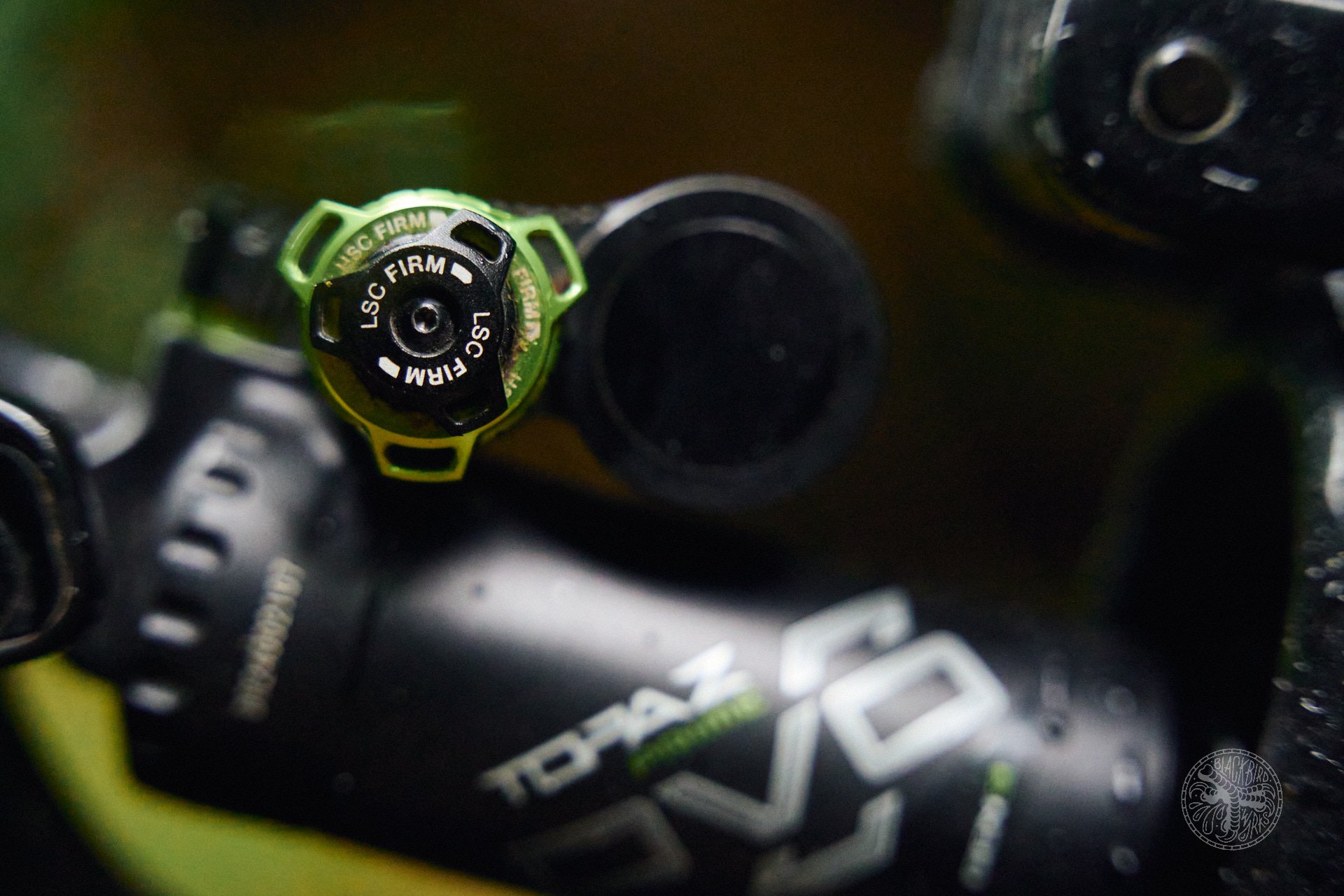
LSC has a sweep of 5 clicks, with HSC at 10 clicks.
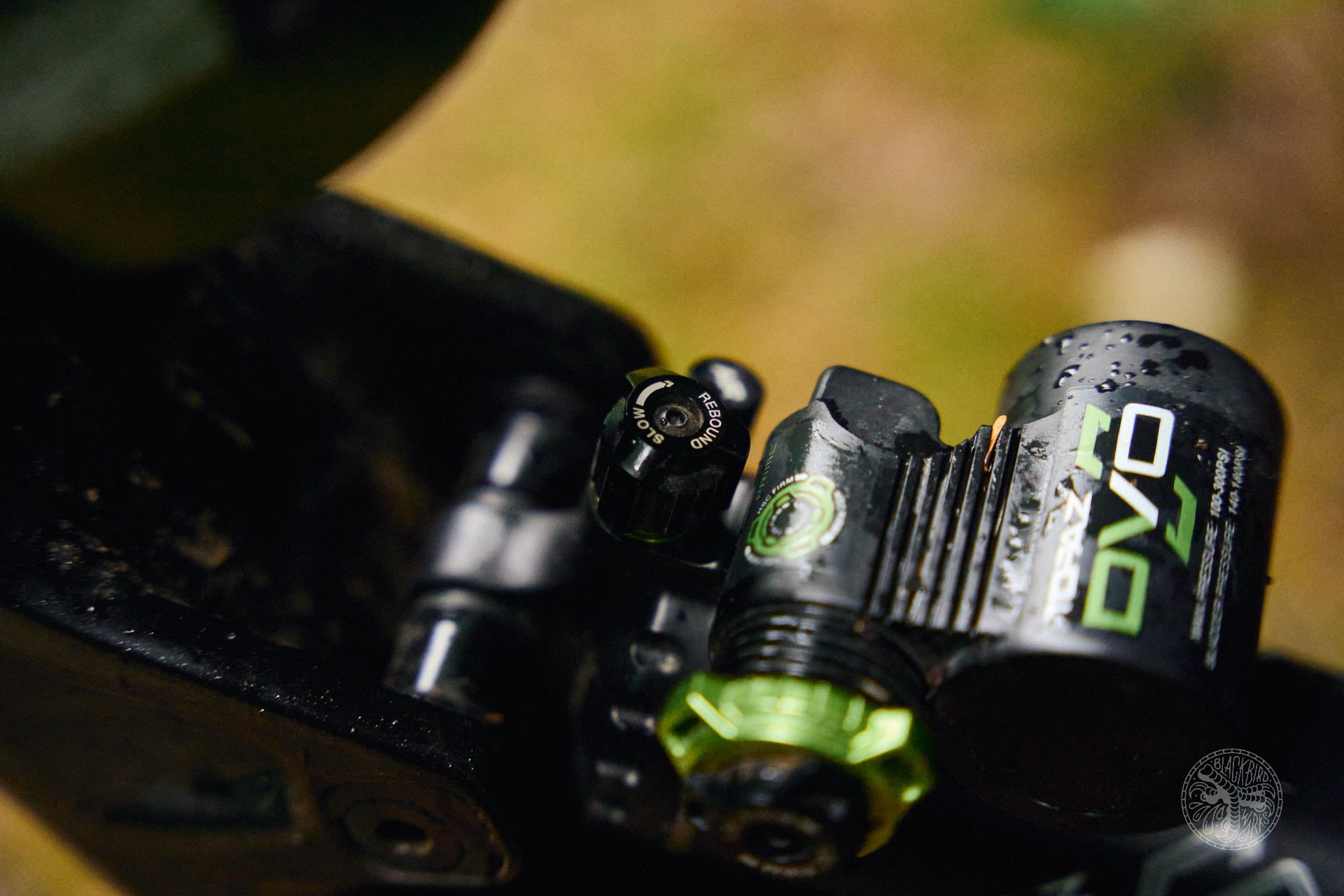
9 clicks of rebound adjustment.
Endless Adjustment
The Topaz Prime is a highly adjustable air shock. There are external dials for adjusting high and low-speed compression, and rebound. There isn’t a climb switch, which is okay - more on that later.
The main air can is inflatable to 300PSI. Riders can easily pop off the air can to add included volume spacers for tuning both the positive and negative air chambers. End stroke progression can be increased by adding up to 2 volume spacers in the positive air chamber. For those desiring a firmer feel off the top, the negative chamber also accepts up to two volume spacers for further fine tuning.
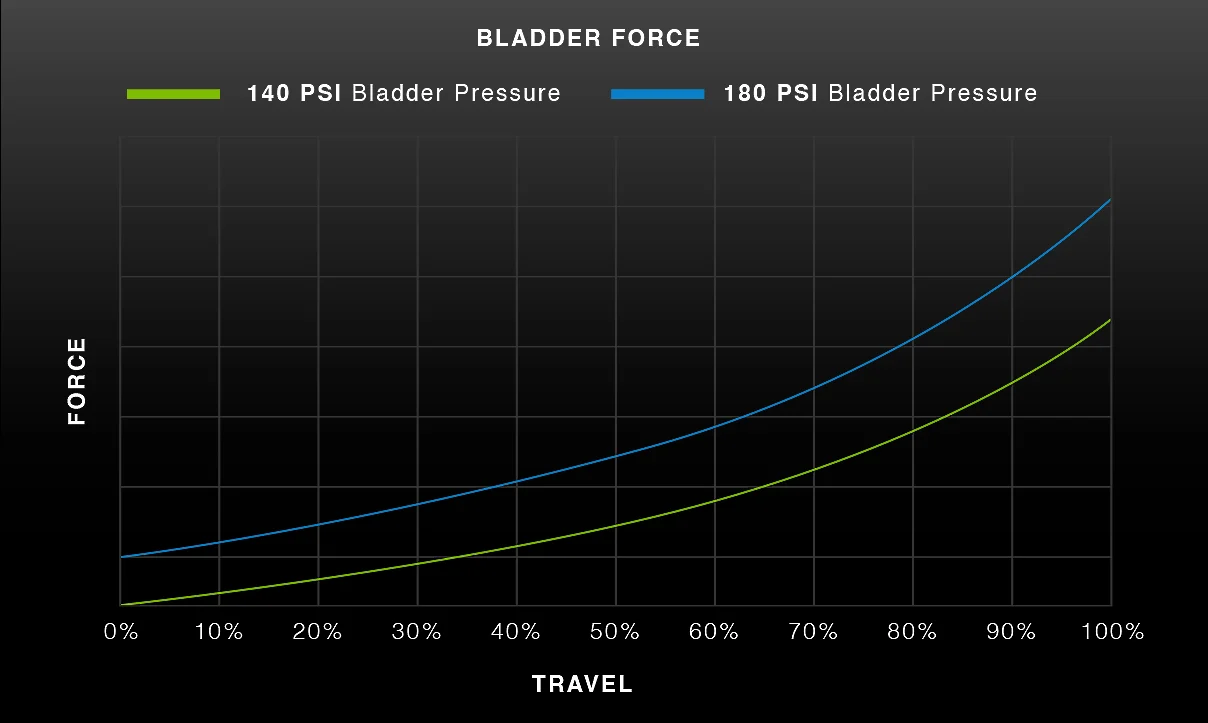
DVO foregoes an IFP, using a pressurized bladder. Adjustable from 140-180 PSI via shock pump, increasing the bladder pressure ramps up preload and compression damping.
Most shocks utilize a non-adjustable internal floating piston (IFP) in the reservoir. DVO uses a pressurized air bladder instead of an IFP, which can be adjusted with a shock pump under the reservoir cap screw. I perceive this as an extra form of compression damping. DVO’s setup guide suggests rider weight correlates with bladder pressure, though this is merely a guideline. Riders should tinker with bladder pressures regardless of the setup chart, provided they are in the operating window of 140-180 PSI. Lighter riders would use less bladder pressure, which translates to a supple feel off the top, less support, and potentially less consistent damping during long descents. Conversely, heavier riders are directed to crank the bladder pressure up, giving more support to push into, increased progression, and consistent damping for long descents.
I stuck with a stock tune to observe how the Topaz Prime would act if I purchased it off the shelf. DVO also does custom tunes at an additional cost of $140 USD, which includes a custom-built shim stack, high-performance race oil, and a hand bleed.
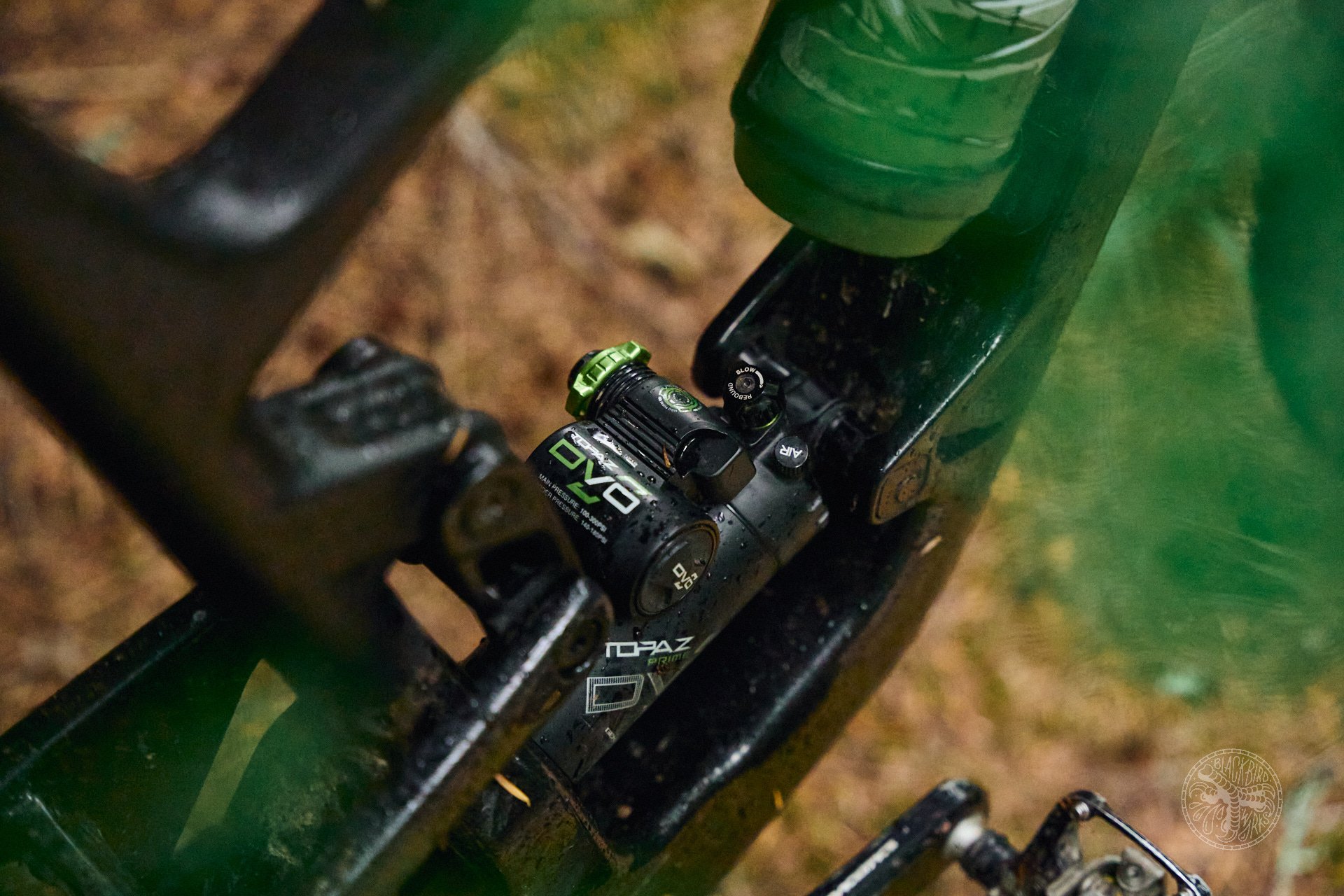
Setup
I used the DVO setup guide for baseline settings, tweaking knobs and air pressures to see what different ride characteristics I could feel. The following settings best suit my riding style and terrain:
Main Chamber 165 PSI @ 30% sag,
1 volume spacer in positive air side, / 0 in negative side
Bladder: 165 PSI
Damper settings (from closed):
3 clicks LSC
3 clicks HSC
6 clicks Rebound
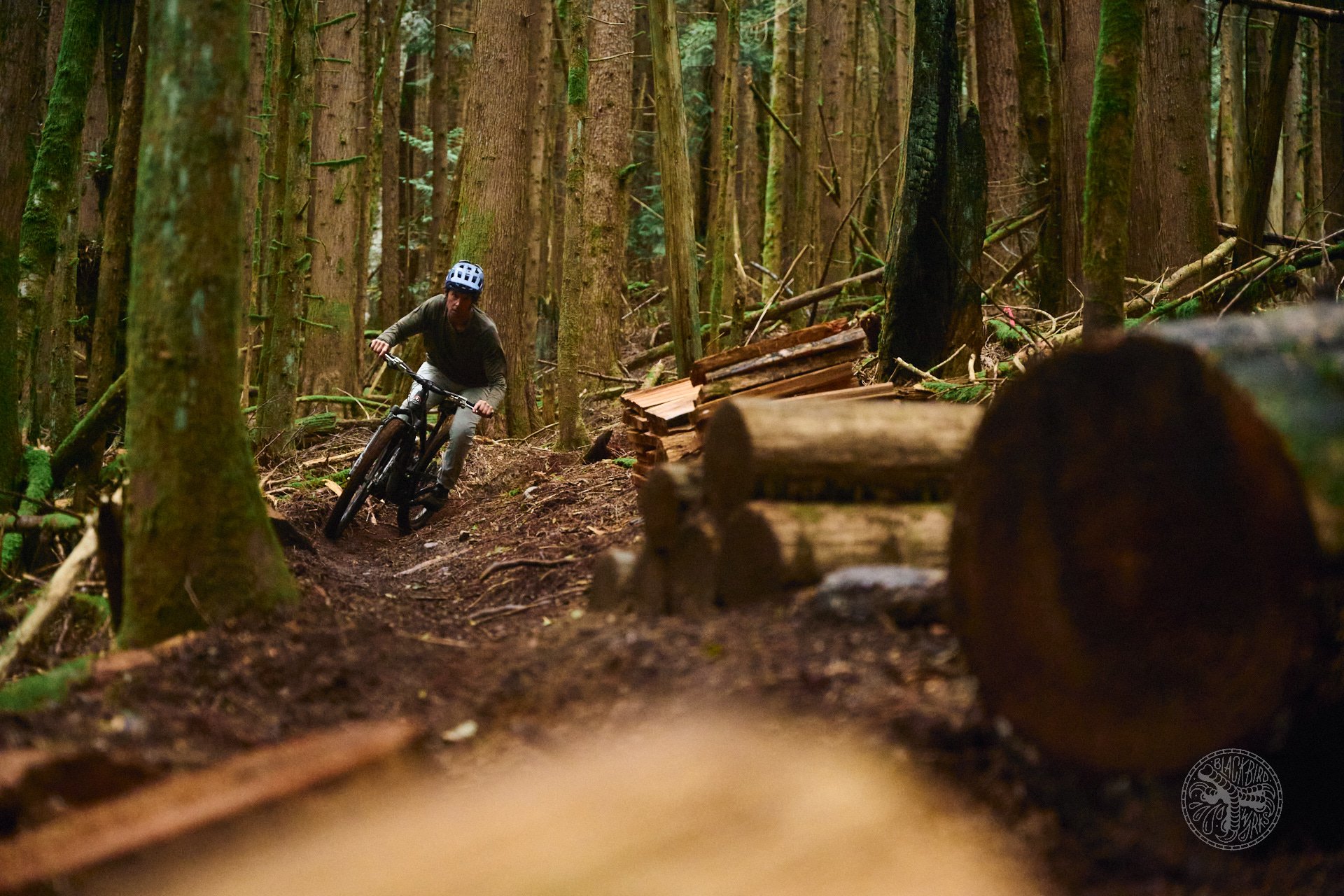
Lots of support for accelerating out of corners.
Ride Experience
The Topaz Prime was thrown immediately into the fire as its inaugural ride was in the Whistler Bike Park. Loose dust and gravel over firm dirt were on the menu. Braking bumps and ruts had formed on both flow and technical trails. The break-in period happened very quickly, in what felt like a few hundred metres. This was no time to be off my game and potentially crash in such rugged conditions, so I stayed aggressive in my stance, pushing hard on the tires.
Trading the stock RM Altitude Fox DHX 2 coil shock for the air-sprung Topaz Prime, I felt vindicated with my initial setup of 170PSI and suggested damper settings. The beginning stroke isn't as silky as a coil shock - apples to oranges, if you will - but the DVO felt very smooth. Despite the slippery conditions, I immediately noticed grippy small-bump sensitivity. The ride qualities of an air shock shone through with high mid-stroke support, and a firm platform to push against for corners, popping off lips, or quick pulls to reach the backside of natural transitions.
There's no climb switch to firm up low-speed compression damping - and I'm okay with that. The Rocky Mountain Altitude test rig sits high in its travel and grips exceptionally well on smooth or slippery technical ascents without sapping too much energy.
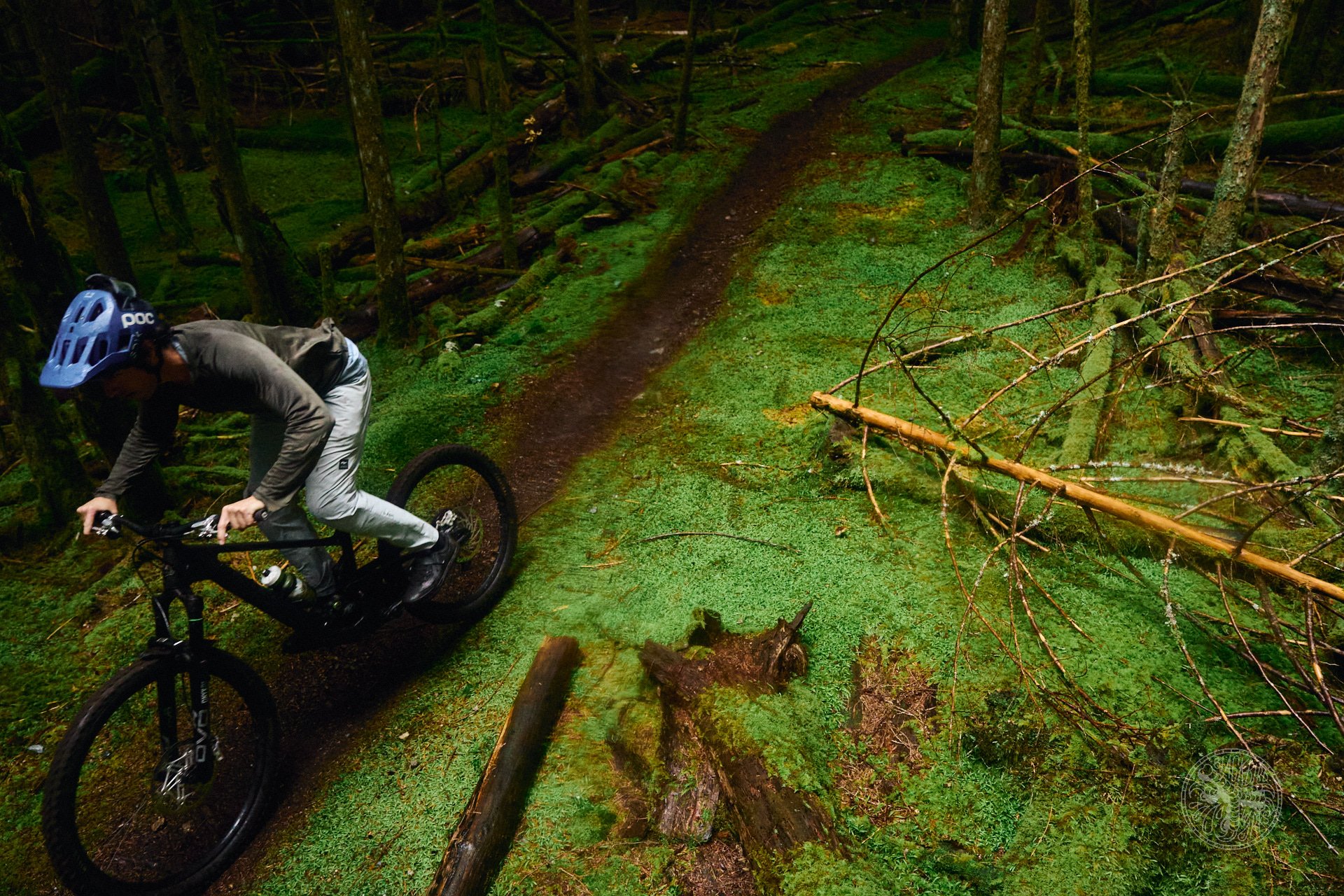
As much as I love riding bike park terrain, I'm fortunate enough to ride the finest ribbons of dirt whether it be on manicured flow trails, natural loamers, or steep tech. Rock-armoured trails are few and far between. I aired the main chamber down to 160 PSI, which resulted in too much sag and not enough initial sensitivity. Returning to 170PSI, I upped the bladder pressure to 170 PSI. This setting felt very damp and stiff, teetering on the edge of comfort when blasting through chunder and holes. It also kicked my ass if I was lazy in the bike positioning department, not weighting my feet properly or riding backseat - unsustainable.
I wondered how the bike would feel with more progressivity through the stroke. For the next ride, I added one spacer to the positive chamber, dropped the main chamber pressure to 165 PSI, and the bladder to 165 PSI. The fall dirt ended up damn near perfect, minimal moisture with velcro-ish grip. The terrain menu featured steep technical loam trails, off camber corners and dreaded half-buried greasy roots. My revised settings yielded better grip and small bump sensitivity, a comfortable ramp into the latter part of the stroke, and a perceptible reserve to tame unexpected big hits. Porridge just right! This also nailed the fore/aft balance between the Topaz and the Onyx D1 38, Pressuring and unweighting the bike felt far more intuitive and forgiving compared to my previous high pressure/linear settings. I was able to stay sporty yet reasonably comfy on a low-angled loamy trail full of holes and natural doubles. The day totaled 27km and 1400M elevation gain via the pedals, thanks to perfect oats!

Final Thoughts
The new DVO Topaz Prime has a giant range of adjustability, from comfortable to race-like, linear or very progressive, and everything in-between. It feels very smooth and predictable when you arrive at your preferred operating window. My experience wasn't entirely intuitive for what settings felt best on home terrain, but was also a great lesson on tuning for different conditions.
At 550 USD, the Topaz Prime is nearly $200 less than premier yet bone-stock shocks from large suspension players. Ordering a fully-customized shock tune adds $150 to the sticker, which might be the ticket for those willing to go the extra mile for a sublime enduro/ebike air shock feel with endless adaptability.


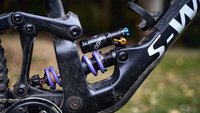
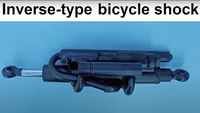
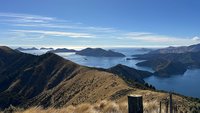





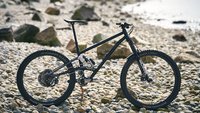
Comments
Allen Lloyd
6 months ago
This looks to be a smoking deal on a very tunable shock, what is the catch?
Reply
Mammal
6 months ago
Having owned several DVO shocks and forks in the past, the only thing I can think of is a very slight complication increase in the bladder assembly. If not assembled completely correctly, they can shift a bit during use and that results in requiring a rebuild/bleed.
That said, simple services can be done at home with a reasonable set of tools, and that includes replacement of the bladder. All parts are available from DVO and authorized service places (SuspensionWerx). Over the course of 3 rebuilds for the standard Topaz I had, the bladder issue never came up, but I heard about it in the forums. In fact, that shock soldiered on for the 3-ish years I had it, without any replacement parts (including seals), and worked very well thoughout.
Reply
Graham Driedger
6 months ago
Obviously DVO is a drastically smaller company than large players of the suspension game. I don't think there is a catch, from my experience, so far. Ordering a fully custom shock (or fork) straight from factory is an option I don't see from other manufacturers.
Reply
burnskiez
6 months ago
For what its worth, I got my Onxy SC D1 tuned by them and have been very happy with it so far. The fork came on a used bike and one of the stanchions was also scratched which they replaced for a very reasonable price at the same time.
I’ve been so happy with everything that I haven’t upgraded to the Mezzer that I was planning on purchasing a year and a half ago.
Reply
Timer
6 months ago
Having used a previous Topaz for 5 years, the only catch I can think of is the smaller service network.
When I got mine there was no custom tuning option from the factory and there are very few tuning shops who work on DVO.
Reply
Jenkins5
6 months ago
I've been on the Topaz Gen 3 (3 position lever instead of HSC and LSC) and it's been amazing all season....Zero issues and very plush....A nice change after my last X2 blew up twice in quick succession....
Reply
Graham Driedger
6 months ago
Glad you're digging it. I haven't had an opportunity to test the Topaz against the X2, but I'm keen to do so and will update the article if the opportunity arises.
Reply
Heinous
6 months ago
It’s a smart move to bring the custom time option on house. It was already happening, some distributors even doing it, and this way they gather data on what’s working, the shock wear and tear, and get paid for it.
If you assume the riders opting for an extra cost custom tine might ride more or harder these are exactly the people who also benefit from the additional level of QC customised tuning offers.
Reply
ohio
6 months ago
Sounds like a great option at a reasonable cost - and the team at DVO has always seemed like good people to support. Glad to have DVO putting some real pressure on the big guys.
One nitpick in the article - seems like the pitch "set it and forget it shock" is at odds with a shock that is actually highly tunable on more dimensions than even other high-end offerings.
Reply
Graham Driedger
6 months ago
I don't disagree with you on the set it/forget it notion. The devil is in the details for taking enough time to achieve a versatile setup, so I'll see how these parameters fare over the next while. My experience in fine-tuning the Topaz felt more granular compared to other shocks of recent past. I do appreciate feeling ride qualities that work (or don't) along the way, factoring in different tuning capabilities for riding styles and terrain.
Reply
Lynx .
6 months ago
This sounds like a good option shock, think maybe I'd prefer the bladder to an IFP after my dealings with a DHX Air years ago, but I guess also lots of time has passed and maybe they don't "flip" like they used to. Have always seemed like DVO offered some decent value for the product, but not being one of the big players, not something you see on many, if any stock builds - Giant had them for a I think 2 seasons and then went back to Fox/RS.
One thought on the lack of "climb" switch, is that the LSC is only 5 clicks, so if you're heading up a sustained climb, you could just crank the LSC all the way down to help firm things up some, it's what I do on my shock on the Phantom as I only run it 3 clicks out from fully closed, so easy enough to just count the 3 clicks out when I'm ready to hit the trail/descend.
Reply
BarryW
6 months ago
Great, to the point review Graham. No one I regularly ride with uses DVO stuff, but it seems like a great option especially considering the price.
Reply
ReformedRoadie
6 months ago
At some point DVO announced that an upgrade option for older Topaz and Jade X would be available to basically make them a Prime version...haven't seen or heard anything since. Emailed them awhile back and was told it was eventually coming.
Reply
Please log in to leave a comment.